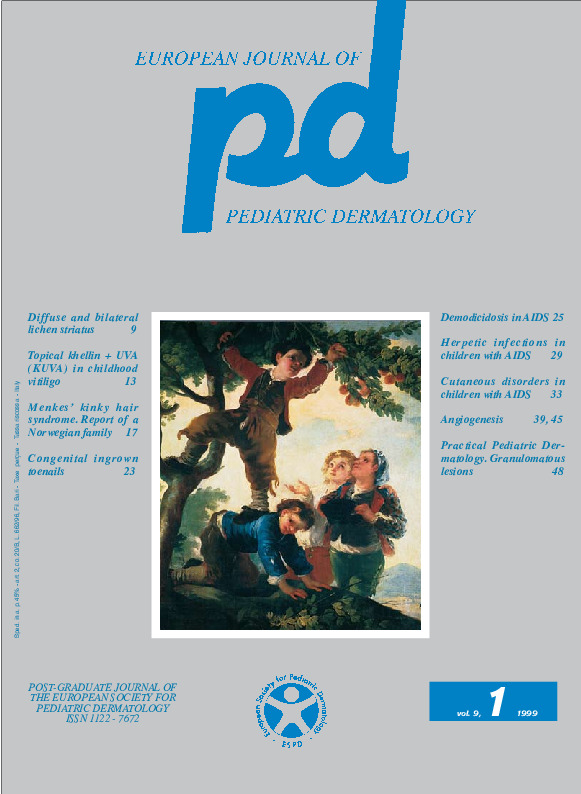Demodicidosis in a child infected with acquired immunodeficiency virus.
Downloads
How to Cite
Patrizi A., Trestini D., D’Antuono A., Colangeli V. 1999. Demodicidosis in a child infected with acquired immunodeficiency virus. Eur. J. Pediat. Dermatol. 9 (1):25-8.
pp. 25-8
Abstract
Mites such as Demodex folliculorum and Demodex brevis are natural hosts of the human pilo-sebaceous follicle. The spectrum of the skin disorders due to these parasites includes follicular pityriasis, papular and pustular eruptions of the scalp, acne rosacea, some cases of blepharitis, perioral dermatitis, pustular folliculitis and hyperpigmented plaques. The presence of Demodex in the human skin is directly related to the age of the subject. Therefore, it is present in almost all aged people, whereas it is exceptionally found in children aged less than 5-10 years. This is probably due to the different activity of the sebaceous glands at various ages. As a matter of fact, the highest concentration of Demodex is found in the cutaneous areas with more numerous sebaceous glands and more abundant sebum production (naso-labial folds, nose, forehead and perioral region). The Authors report a case of demodicidosis in a 7-year-old child, who was HIV positive since birth, because vertically infected by his drug addict mother. On physical examination, papular and nodular lesions were located on the face, neck, shoulders and “décolleté”. Topical metronidazole was responsible for worsening of the clinical features. On the other hand, the latter regressed after treatment with topical crotamitone. The compromission of the immune system favors the growth of Demodex. As a matter of fact, the rare cases of childhood demodicidosis so far reported in the relevant literature prevalently occurred in markedly immunocompromised children, such as children with leukemia undergoing chemotherapy and children infected with the human immunodeficiency virus. Most authors believe that the altered immune system, which is characteristic of the acquired immunodeficiency syndrome, favors the growth of this usually saprophyte agent so that the latter eventually causes a skin disorder. On the other hand, some authors suspect an unusual hypersensitivity against the mite itself.Keywords
Demodicidosis, AIDS

